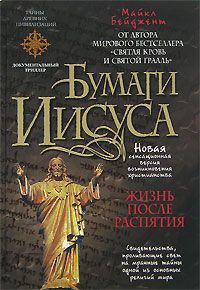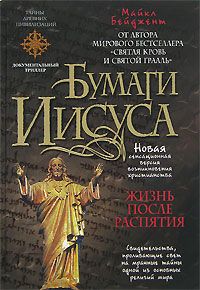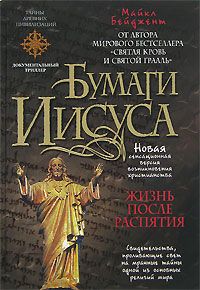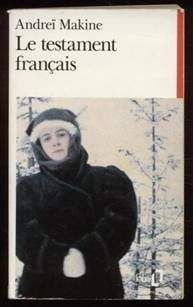305
paget! in the Footsteps of Orpheus, стр. 136; Temple, Netherworld, стр. 31, на основе приведенных Пейджетом цифр высказывает предположение, что эта работа заняла два года.
Paget, In the Footsteps of Orpheus, стр. 19.
Вергилий, «Энеида», VI, 149–187, (стр. 163–164). См. также Clark, Vergil, Aeneid, 6, 40 ff. and the Cumaean Sibyl's Cave, Latomus, XXXVI, 1977, стр. 485.
Вергилий, «Энеида», VI, 187, (стр. 164).
Virgil, The Georgics, 4, 563–565, (стр. 143).
Ливий, «История Рима», 24, 12–13.
Страбон, «География», V,4, 5, 312 pagCt, in the Footsteps of Orpheus, стр. 106.
Страбон, «География», V, 4, 5.
Paget, In the Footsteps of Orpheus, стр. 102.
Paget, In the Footsteps of Orpheus, стр. 111.
Paget, In the Footsteps of Orpheus, стр. 111.
Paget, In the Footsteps of Orpheus, стр. 113.
Paget, In the Footsteps of Orpheus, стр. 127–130.
Temple, Conversations with Eternity, стр. 12–13, цитируется из Paget, In the Footsteps of Orpheus, стр. 137.
Temple, Conversations with Eternity, стр. 17.
Paget, In the Footsteps of Orpheus, p 135.
Temple, Netherworld, стр. 10.
Temple, Netherworld, стр. 10.
The Cults of Magna Graecia, симпозиум, организованный Обществом Вергилия, Кумы, 19–22 июня, 2002.
Вергилий, «Энеида», VI, 850–853, (стр. 182).
Homer, The Odyssey, Book XI, (стр. 171).
Страбон, «География», V, 4, 6.
Страбон, «География», V, 4, 5.
Например, Огден, Greek and Roman Necromancy, стр. 22, который утверждает, что литературная традиция помещает оракул на берега озера Аверн, значит, он должен быть там. Однако приводимые им примеры не позволяют сделать такого вывода. Другие, например, Баркерт в Lore and Science in Ancient Pyfha-goreanism, стр. 155, проявляют большую осторожность. Обе точки зрения подчеркивают необходимость систематических раскопок в Байе.
Cм., например, Hardie, «The Crater of Avernus as a Cult Site», стр. 284.
Ogden, Greek and Roman Necromancy, стр. 19–21.
Kingsley, Ancient Philosophy, Mystery, and Magic, стр. 252, примечание 6.
Апулей, «Метаморфозы, или Золотой осел», XI, 23 (стр. 340). Перевод из Burkert, Ancient Mystery Cults, стр. 97. Популярный перевод Роберта Гревса носит название «Золотой осел».
Burkert, Lore and Science in Ancient Pythagoreanism, стр. 155; Louis Robert, Archaeological Reports for 1959–1960, The Journal of Hellenic Studies, 80–82, стр. 41–43. См. стр. 42–43.
Peter Kingsley, личная переписка, March 2002.
Burkert, Ancient Mystery Cults, стр. 174.
Платон, «Федон», 64a (стр. 9).
Платон, «Федон», 67е (стр. 14).
Баркерт считает, что это цитата из Плутарха, а не из Фемистия. См. Burkert, Ancient Mystery Cults, стр. 162, примечание 11.
Цитируется в Farnell, The Cults of the Greek States, III, стр. 179.
Seneca, Epistles, xc.29, перевод С. Densmore Curtis. Гастингс, Encyclopaedia of Religion and Ethics, 7, стр. 327.
Quoted by Eliade, Rifes and Symbols of Initiation, стр. 111.
Eliade, Rites and Symbols of Initiation, стр. 112–113.
Gorman, Pythagoras, стр. 48–49.
Kingsley, In the Dark Places of Wisdom, стр. 198. См. также Kingsley, Ancient Philosophy, Mystery, and Magic, стр. 340–341.
Kingsley, Ancient Philosophy, Mystery, and Magic, стр. 341.
Интервью с Питером Кингсли, «Piloting the Ship of Life», Freemasonry Today, Spring 2004 (Issue 28), стр. 24.
Поэма Парменида в переводе Кингсли, Reality, стр. 26.
Zuntz, Persephone, стр. 370–376; Kingsley, From Pythagoras to the Turba philosophorum: Egypt and Pythagorean tradition, Journal of the Warburg and Courtauld Institutes, 57, 1994, стр. 3–4.
Cole, «New Evidence for the Mysteries of Dionysos», Greek, Roman, and Byzantine Studies, 21, 1980, стр. 233–234.
Guthrie, Orpheus and Greek Religion, стр. 173.
Профессор Уолтер Баркерт, личная переписка, май 2005. Баркерт объясняет, что это сложный для понимания текст и что возможны два варианта его прочтения. Альтернативный вариант: «…и ты ждешь под землей празднества, как и другие посвященные».
Аристофан, «Лягушки», стр. 308.
Kingsley, In the Dark Places of Wisdom, стр. 78–79.
Kingsley, Ancient Philosophy, Mystery, and Magic, стр. 284.
Kingsley, In the Dark Places of Wisdom, стр. 83.
Kingsley, In the Dark Places of Wisdom, стр. 141.
Asclepius, 24, in Hermetica, стр. 81.
Ямвлих, «О египетских мистериях», VIII, iv, (стр. 138–139).
Iverson, Egyptian and Hermetic Doctrine, стр. 43. Иверсон также объясняет: «Если рассматривать их как отражение непоследовательности египетской космологии, то кажущиеся противоречия герметической идеи творца и демиурга получают естественное объяснение, одновременно открывая неожиданный взгляд на взаимоотношения этих двух традиций и на зависимость корпуса герметических текстов от египетских источников», стр. 40.
Kingsley, Poimandres: the etymology of the name and the origins of the Hermetica, Journal of the Warburg and Courtauld Institutes, 56, 1993, стр. 5.
Iverson, Egyptian and Hermetic Doctrine, стр. 30.
Iverson, Egyptian and Hermetic Doctrine, стр. 37–38, ссылается на герметический трактат Asclepius, 38, в Hermetica, стр. 90.
Iverson, Egyptian and Hermetic Doctrine, стр. 41.
См. выше, примечание 48.
Iverson, Egyptian and Hermetic Doctrine, стр. 35–36; обсуждается, как объяснение египетского понятия «дыхание жизни» обосновывается при помощи герметических текстов.
Климент Александрийский, «Строматы», VI, VI (стр. 324).
Ямвлих, «О египетских мистериях», I, I, (стр. 21).
Иерусалимская Библия, Новый Завет, стр. 19, примечание d.
Евангелие от Матфея, 3:2; перев. Иерусалимская Библия.
Бытие, 28: 10–19.
Филон Александрийский, «О созерцательной жизни», 28 (стр. 129).
Caplice, The Akkadian Namburbu texts: an introduction, стр. 10.
Parpola, «The Assyrian Tree of Life: tracing the origins of Jewish Monotheism and Greek Philosophy», Journal of Near Eastern Studies, 52, 1993, стр. 174, примечание 64.
Parpola, «The Assyrian Tree of Life: tracing the origins of Jewish Monotheism and Greek Philosophy», Journal of Near Eastern Studies, 52,1993, стр. 185 и 206. См. также стр. 190, примечание 107, где Парпола пишет: «…нет ничего необычного в том, что монотеизм иудейской религии отличается от ассирийских предшественников… То же самое относится к христианству с его понятием триединства… в основе их лежит ассирийская религия и философия».
Иезекииль, 1: 26–27.
Kingsley, «Ezekiel by the Grand Canal: between Jewish and Babylonian Tradition», Journal of the Royal Asiatic Society, 3rd Ser., 2, 1992, стр. 339.
Kingsley, «Ezekiel by the Grand Canal: between Jewish and Babylonian Tradition», Journal of the Royal Asiatic Society, 3rd Ser., 2, 1992, стр. 342.
Kingsley, «Ezekiel by the Grand Canal: between Jewish and Babylonian Tradition», Journal of the Royal Asiatic Society, 3rd Ser., 2, 1992, стр. 341 quoting from VAT 8917 (Vorderasiatisches Museum), Berlin.
Kingsley, «Ezekiel by the Grand Canal: between Jewish and Babylonian Tradition», Journal of the Royal Asiatic Society, 3rd Ser., 2,1992, стр. 345.
Kingsley, «Ezekiel by the Grand Canal: between Jewish and Babylonian Tradition», Journal of the Royal Asiatic Society, 3rd Ser., 2, 1992, стр. 345.
Parpola, «The Assyrian Tree of Life: tracing the origins of Jewish Monotheism and Greek Philosophy», Journal of Near Eastern Studies, 52, 1993, стр. 169.
Parpola, «The Assyrian Tree of Life: tracing the origins of Jewish Monotheism and Greek Philosophy», Journal of Near Eastern Studies, 52, 1993, стр. 190, примечание 106.
Parpola, «The Assyrian Tree of Life: tracing the origins of Jewish Monotheism and Greek Philosophy», Journal of Near Eastern Studies, 52,1993, стр. 168.





